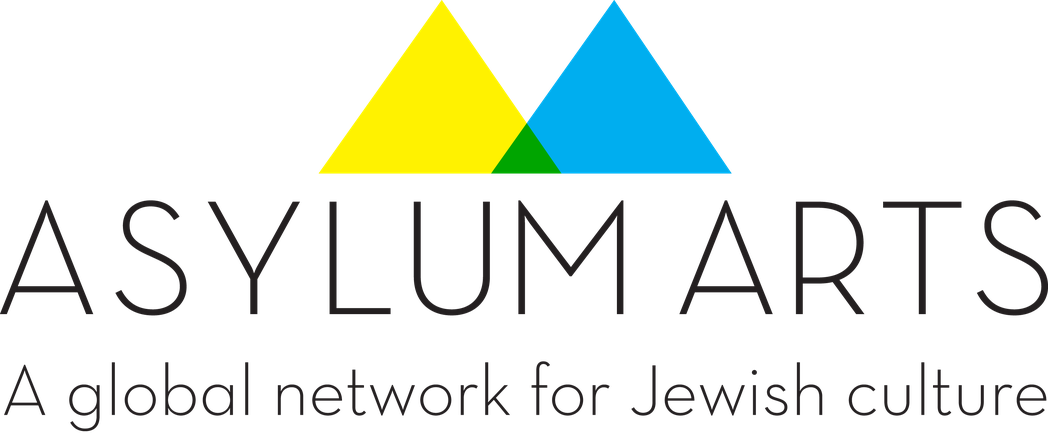
Part I: Jewish traditional texts have a lot to say about the place of arts and artists within the historical tradition. We chose a few that illustrated some of the ways the creators of the texts thought about the vividness and multi-disciplinary nature of art, connections between art and life, and even one story with a wink to contemporary conceptual art.
(35) have been endowed with the skill to do any work—of the carver, the designer, the embroiderer in blue, purple, crimson yarns, and in fine linen, and of the weaver—as workers in all crafts and as makers of designs.
אמרו כי מלך אחד הטיל על שני אומנין ציור קירות היכלו והמה קבלו עליהם וחייבו ראשם לגמור מלאכתם ליום נועד וחלקו מלאכתם לחצאין זה נוטל שתי קירות סמוכות וזה נטל שתים כנגדן והנה האחד היה איש מהיר במלאכתו נזדרז אל המלאכה וכלה אותה טרם המועד אשר יעדו. והשני היה מתעצל טומן יד הולך ושובת עד כי אפסו לו הימים עד בלתי השאיר לו תשע או עשור. ויהי בראותו כי כלאה לו הרעה מאת המלך חרד בלבו חרדה גדולה וצעק על חרפתו וכלימתו צעקה גדולה כי ראה חבירו יוצא בשם ותהלה כשם הגדולים והוא יהיה לקללה ולשנינה כאחד הנבלים ובחזקתו ותעצומו בבכיתו וצערו צלל בעומק רעיוניו ועלתה במחשבתו משיחה נפלאה מסוגלת לצחצח ולזכך האבנים עד שיהיו מזוככים ונמרקים כעין נחשת קלל וימהר לעשות אותה ויקח את המסך ויפרוש בבית מזוית לזוית להבדיל בין מלאכתו למלאכת חבירו וטח שתי קירותיו בטיח האמונות טיחה זכה ונקיה יותר נאותה לפי המלאכה ואח"כ שפשף אותם היטב וימשח אותם בשמן המשחה עד אשר היו כמראות של זכוכית המקבלות המראות קבול נאות וחזק. ויהי היום ויבא המלך אל היכלו לראות מלאכת עבודתו ויבאו עמו כל גדולי מלכותו וימצאו שתי הקירות אשר עשה האומן הראשון מעשה מפואר כל מלאכת חרש וחושב וירא והנה טוב מאד וישמח המלך עליו וצוה לתת לו שכר משלם. וישאל גם את השני לאמר מה מלאכתך ויאמר יבא אדוני המלך מעבר הוילון וביתה ויעבור וירא והנה שתי הקירות חלקות ומצוחצחות מבלי שום ציור ופתוח ויכעס עליו המלך לאמר מה עשית וימהר האומן טרם תעלה חמת המלך ויסר את המסך המבדיל בין שתי המלאכות והנה כל הפתוחים והציורים אשר עשה חבירו בשנתים ימים או שלש כלם נתחקו כמו רגע בצחצוח הקירות אשר תיקן באופן נפלא מהיופי והנעימות שאין הפה יכולה לדבר מלבד מה שהוכנו לקבל כל שאר הצורות והפתוחים אשר ישימו לפניהם מזולת פתוחי הקירות אשר כנגד' ממה שנמצאי' פה היום ומאשר יבואו אחרי כן ויוסיף המלך שמחה גדולה במלאכת הזאת האחרונה מבראשונה וכל אשר עמו נפלאו מאד מהמראה ויאהב המלך את האומן ויוסף את שכרו ויכבדהו וינשאהו מן הראשון.
(8) A king commissioned two artists to decorate the walls of his throne room, setting a time limit for completion of the task. The first artist, true to his reputation, set to work immediately and completed beautiful murals in good time. The second artist allowed most of the allotted time to elapse without even commencing the work on his side of the throne room. When he finally realised that time was running out on him, and that he could not hope to match his colleague, he decided to polish and silver the walls he had been commissioned to paint so that they would reflect the images portrayed on the walls that his colleague had decorated. He hung a curtain across the room, and when the king inspected the work of the first artist he was favourably impressed and profuse in his praise. When the second artist took the king to inspect his handiwork,- the curtain still dividing the two halves of the room,- the king became noticeably angry, failing to be impressed by polished blank walls. Thereupon the artist removed the curtain, and suddenly those two walls were filled with the perfect reflection of the murals of the first artist. The king rewarded the second artist even more handsomely, having been impressed by that artist's genius and the circumstances that occasioned it. This illustrates that although the work of the first artist was undoubtedly the superior accomplishment from the standpoint of originality, the latter had required the greater effort in order to achieve a similar image. The king realised that only careful groundwork had enabled the second artist to project a major mural on to his walls instantly. The reward paid him was in recognition of his inventiveness as well as his effort to compensate for his former laxity.
Part II: Sefaria's texts can be a fascinating and useful resource to explore as part of the research process in creating artistic projects. With many thousands of texts, there is a lot to dig into for projects that specifically address Jewish themes as well as to investigate how Jewish authors approach larger topics. Asylum Artists have created projects engaging with migration and diaspora, jasmine, the etrog, borders and fences, and miscarriage - all themes that one could explore using the tools of Sefaria to find relevant and (hopefully!) inspiring texts.
Researching an idea?
Enter a word or concept that you are looking for in a text or source sheet. Toggle between “Texts” and “Sheets” to see the results.
- After a search term has been entered, the results will be divided by “Texts” and “Sheets." Click on a text from the list to open the text in the database.
- Searches can be filtered. Click on “Filter” and check the boxes that you’re interested in. Only the selected texts will be listed in the search.
- Exact search and broad search - Clicking on “Exact search” changes your search from a broad search to an exact search.
- Searches can be sorted. There are two sorting options, relevance and chronological. Relevance ranks the results by the number of times that the text is mentioned in other texts. A chronological sort returns results in an order based on when the book was published.
- Click “Sheets” to view all of the public source sheets that match your search.

Is there a topic you want to research Jewishly?
Searching by topic will result in a list of the most popular texts appearing on public source sheets with the topic's tag.
- Select "Topics" from the library homepage.
- Type the name of a topic on the "Search Topics" line and select.

Searching for a Jewish Text?
Search for a text by name.
Type the name of the text in any search bar on the site.
- The search bar is bilingual. Begin typing (in English or Hebrew) and a drop-down menu of suggestions will appear. Or, skip the drop-down menu entirely and click “enter” after typing the word. Clicking on the א opens the Hebrew keyboard.
- Sefaria’s drop-down search menu recognizes variant spellings. Search can handle misspellings and various approaches to transliteration. Begin typing and look for your text in the drop-down menu.
- Search for source sheet authors. Enter a name in the search bar and click on “sheets”. The search will result in a linked list of the author’s public source sheets.

Looking to Browse a Jewish Library?
Click on the three lines in the upper left-hand corner to arrive at the library, choose the category, find your book and click on it. Click on the name of the book on the top of the page to open the table of contents (TOC). Navigate to the desired chapter from the TOC.

Follow the links within a text to discover more...
- Click on the text that you are interested in. The resource panel will open to the right.
- Scroll down and click on "Sheets".
- Select the source sheet that interests you.

How to Collect Sources on Sefaria
1. Sign up for a free Sefaria account or log in if you already have one.


2. Start a new sheet.

3. Add sources from the Sefaria library, your own text, media including images, youtube videos, and soundcloud clips, or your own comments.

We hope that Sefaria can open up new sources for research and exploration - please be in touch with us if you have any questions. If you want to brainstorm about art-related searches, please contact [email protected], and if you are somehow stymied by Sefaria or want expert advice, please be in touch with Sara Wolkenfeld at [email protected]. If you come across something fabulous or fascinating or super useful, we would love to hear about your experience as well.



